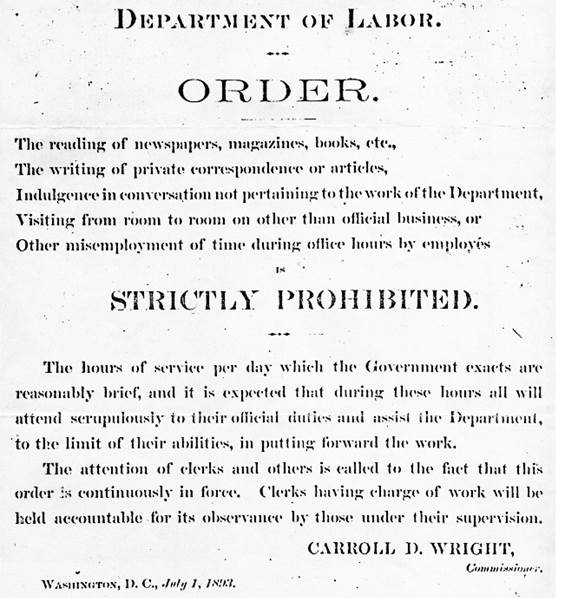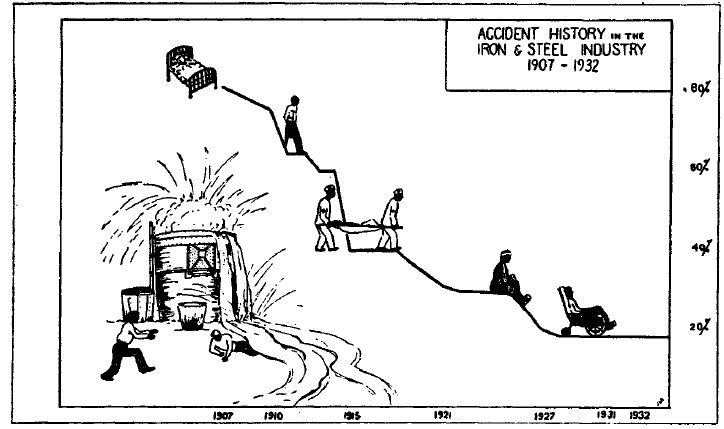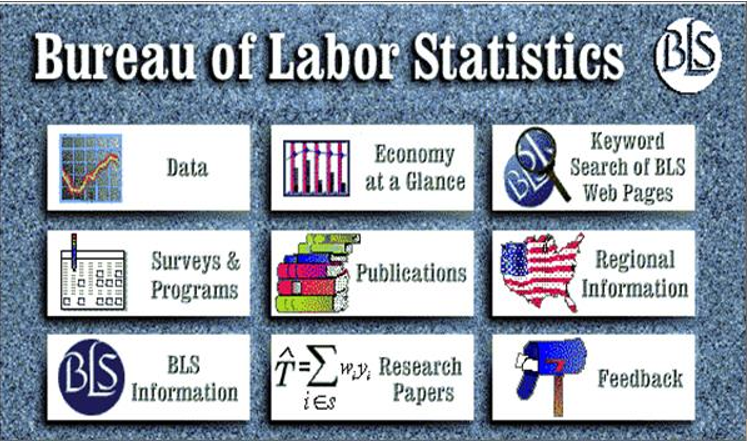An official website of the United States government
 United States Department of Labor
United States Department of Labor
Friday, June 21, 2024
Happy 140th Birthday, BLS. It seems like only yesterday that President Chester A. Arthur signed into law the one-page bill establishing the Bureau of Labor, later renamed the Bureau of Labor Statistics when incorporated into the new Department of Labor in 1913. But it’s been 140 years – 14 decades, 7 score – and a lot has happened. If you want to know all the details, read The First Hundred Years of the Bureau of Labor Statistics, and check out the history page on the BLS website. Today, we’ll take our ERAs Tour, a swift review of some highlights from the past 140 years.
The Bureau’s first 20 years, 1884–1904, were the Carroll Wright years, as the Civil War Colonel and Massachusetts legislator was named the first Commissioner of Labor Statistics and set the standards for the agency. Wright described the agency’s work as “the judicious investigations and the fearless publication of results.” He established guidelines that continue today, including direct collection of data from individuals and businesses and confidentiality of respondents and their information. A no-nonsense guy, Wright issued a memo to staff prohibiting the reading of newspapers, the writing of personal correspondence, and the indulgence in conversation not pertaining to work.

The era from 1905–1924 saw several challenges for BLS, many of which were related to limited funding. Commissioner Charles Neill implemented reforms to address reports of “a large degree of loafing and considerable drinking” among data collection staff. This period also saw the development of several economic indicators that continue today, including the Cost-of-Living Index (now the Consumer Price Index) and payroll jobs data that eventually became the Current Employment Statistics program. Efforts were made to provide greater analysis and context for the data being produced. Commissioner Ethelbert Stewart said, “For 30 years, I have been struggling to put some flesh upon the bony skeleton of mere tabulations.”
The period from 1925–1944 saw an expanded need for economic data to address challenges brought about by the Great Depression and World War II. Wage and price controls during the war led to a strong demand for local data, ushering in the first BLS Regional Offices, which continue operating today, serving as the face of the agency around the country. With product shortages and no regular update of the list of priced goods (it still included high button shoes and women’s muslin underwear), controversies arose over the Cost-of-Living Index, which was being used to determine wage increases. One result was the rebranding of the series to what we know it as today, the Consumer Price Index.
Echoing his predecessor, Commissioner Isador Lubin said “…the Bureau must be enabled more fully to analyze the material it now has …” That analysis included data visualizations, although decidedly old school like this depiction of workplace accident statistics.

Many of today’s BLS programs have their roots in the 1945–1964 era, as the post-war period ushered in expanding families and increased opportunities. With increased unionization, BLS provided new information on collective bargaining and work stoppages. One of the Bureau’s most popular products, the Occupational Outlook Handbook, was first published in 1949. Today, students and career counselors can view regularly updated occupational information online, and we’ve even got an app for that.
Since the days of Carroll Wright, BLS has built partnerships with the states. Today, state Labor Market Information offices work in concert with BLS to produce consistent state and area employment data. During the 1965–1984 era, the Occupational Safety and Health Act expanded partnerships between BLS and the states to include data on workplace injuries, illnesses, and fatalities. This was also the era when BLS welcomed the first of five female Commissioners of Labor Statistics, career employee Janet Norwood. In her own words:
"… I believe strongly that an objective, scientifically created system of data is essential for a democracy to flourish."
"… a statistical agency that does not constantly move ahead in the use of new techniques quickly moves backwards."
BLS joined the online world during the 1985–2004 era, as the first BLS internet site went live in 1995.

BLS continued to develop new programs, like the Census of Fatal Occupational Injuries (1992) and the Job Openings and Labor Turnover Survey (2002). Modernization efforts also led to the introduction of the BLS Internet Data Collection Facility, an online portal for respondents to enter data. That milestone was just the beginning of expanded data collection efforts, which today include email, file transfer, video, and more.
Our final tour stop is today’s era, 2005–2024. The era has brought about enormous change, including the first BLS API and BLS presence on Twitter (now X) and YouTube. New programs include the Occupational Requirements Survey and the Business Response Survey. And we celebrated the 100th anniversary of the Monthly Labor Review, our flagship publication. As one reader put it many years ago: “If you see it in the Review, it’s so.”
Of course, no description of the current era is complete without mention of the pandemic. From that fateful day in mid-March 2020, when BLS staff joined so many others in remote work, BLS demonstrated the “fearless publication of results.” While both BLS staff and BLS data providers were disrupted, both stepped up to get the job done. BLS did not miss a single release and documented some of the most dramatic shifts in economic data in history. In fact, BLS expanded its available data to highlight the effects of the pandemic on workers. We say “thank you” every day to the businesses and households that provide us with their information, which is essential to producing accurate and timely statistics.
140 may not be one of those round numbers that garner attention, but for BLS it represents continued success in producing gold standard data to support public and private decisions. And our 140th year ushers in great promise for the future. This year we welcomed the 16th Commissioner of Labor Statistics, Dr. Erika McEntarfer. And soon, BLS headquarters staff will move into newly renovated space in the Suitland Federal Center, joining the Bureau of the Census and the Bureau of Economic Analysis, where we will enjoy state-of-the-art technology and welcoming collaboration spaces. Watch, also, for a new look to BLS news releases, coming soon.
As BLS continues to conduct judicious investigations and the fearless publication of results, a tip of the hat to those who blazed the trail. You’ve left an enduring legacy, a public trust of accurate, objective, relevant, timely, and accessible economic information. Today’s BLS strives to maintain that trust and pass on that legacy to future generations. Happy Birthday BLS.